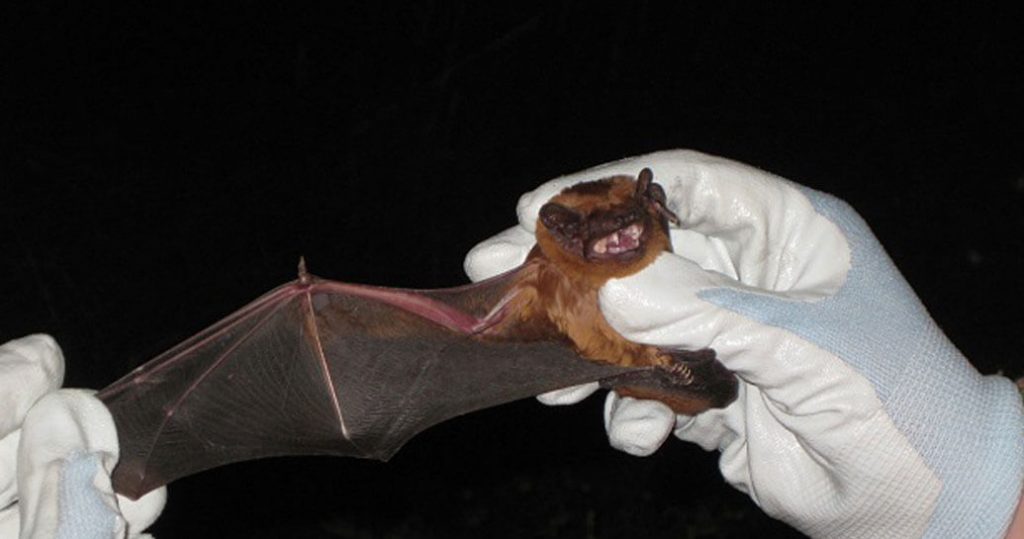Bats: our flying commuters

Did you know the railway is a commuting route for bats?
Bats follow the landscape using sound rather than sight at night. They navigate their routes by using sound waves to understand the distance and size of surrounding objects.
Roads and motorways are often too wide and brightly lit for bats who do not like to travel through bright areas and without the continuous height of vegetation.
Our railway instead has big stretches that often contain far less light and are more densely vegetated. In fact, some of our stations even have timed and motion-sensor lighting that turn off when no trains or people are around, further helping our darkness-loving friends. The vegetation along the railways also provides good foraging and roosting habitat for many bat species.
Here are some other things you might not know about bats on our railway.
Bat facts
- There are 18 species of bat recorded in Britain. And most of them use our railway infrastructure to commute, forage and/or roost.
- All the bat species in Britain eat insects. A single common pipistrelle bat (one of our smallest species) can eat more than 3,000 midges in a night!
- Bats are protected by European and UK legislation. They are European Protected Species but are also protected under the Wildlife and Countryside Act (1981, as amended).
- Bats hibernate in crevices and cracks, in tunnels and in trees during the colder months because these provide a relatively stable temperature and the right humidity levels.
- Bats are more likely to be found in trees and buildings along the railway in the summer, roosting in cavities, rot holes and in roof spaces.
Working with wildlife
We are dedicated to minimising our impact on wildlife. Our in-house ecologists work alongside external ecologists to carry out surveys and advise on our work. These surveys help us identify the habitats and animals in the area that might be affected by our railway maintenance and upgrade work.
We work closely with national conservation groups, natural environment regulators and authorities in England, Scotland and Wales. We even consult them before starting work if necessary, and call on their expertise when needed.
Chichester corridor
We’ve been working with the Chichester District Council since September 2021 to create a wildlife corridor around sections of our railway in Chichester, West Sussex. We hope to increase the biodiversity, that includes supporting the local bat population through this corridor.
We’ve placed several bat boxes in the trees around the railway to encourage bats to roost there. Some empty small buildings have been turned into bat houses. Our teams have also worked with a local Nature Reserve to put bird boxes within their reserve.
We’ve even planted 400 native woodland tree and scrub saplings along the railway line to diversify the flora here, and removed non-native species. This also creates a more diverse and connective corridor for the local wildlife.
We’re committed to protecting and maintaining our wildlife, and it’s initiatives like this that help us do this.